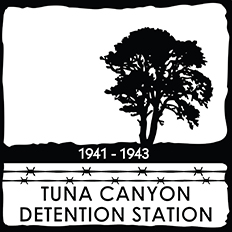My grandfather, Seitaro Harry Iwamoto, arrived in San Francisco on April 15, 1902. His family was from Iizumi, Kanagawa-ken. Japan. He was 17 ½ years old and he entered this country as a student emigrant. He married my maternal grandmother, his first cousin, Toki Uyematsu from Shimooi-Odawara, Kanagawa-ken, Japan. Toki arrived in the US at San Francisco on August 16, 1910 at the age of 18 years and 8 months. My grandfather worked as a bus boy at a hotel in San Francisco. He would learn English by referring to a dictionary that he carried in his shirt pocket .My mother, Tomiko was born in San Francisco on August 28, 1911. Then the family moved to Lompoc, CA. There are several theories why they moved to Lompoc. John McReynolds in his book, “Vanished, Lompoc’s Japanese” theorized that since Seitaro worked as a bus boy at a San Francisco hotel, he might of cleared a table where some weathy Lompoc land owners where having a meal. When they learned that my grandmother was expecting, and learned that they were living in the basement of an apartment, the men told my grandfather that the basement was no place to raise a child and they should relocate to Lompoc. The Iwamoto family theory was the Kanagawa connection. My grandfather had a friend that came from Kanagawa and told that he would have more opportunities living in Lompoc and better place to raise a child.
Then Fumiye was born on May 26, 1913, followed by Kiyoaki, who died in infancy and then came Asako, Miyoko and Chiyoko.
My mother married Robert Shohei Kojima. Since there were no sons to carry out the Iwamoto name, after Kioaki died, my father took the Iwamoto name. My name should have been Henry Tsuneo Kojima. Fumiye married Ichiro Endo and they moved to Garland, CA (Oakland?) Asako married another Endo, Hiroshi. Miyoko married Joe Tachiki and Chiyoko met Larry Kobayashi in college and they were married in Salt Lake City.
At Lompoc my grandfather started a boarding house and then opened up a grocery store to service the farmers living in Lompoc. My grandfather became friends with the local Caucasian doctor and he would accompany the doctor when he visited the pregnant farmer’s wives out in the fields and act as their translator. Then he would house the expectant mothers in his boarding house near their due date.
EVENTS of FEBRUARY, 1942: Seitaro and his brother, Masakichi, were arrested by the FBI on February 19, 1941 and they were both sent to the Santa Barbara County jail. From then on the family did not know what happen to them between being incarcerated in the Santa Barbara jail and ending up at the concentration camp at Ft Lincoln, in Bismark, ND.
Several months ago at the Japanese National Museum in Los Angeles, had an exhibit called the “Only the Oaks Remained”, which described the Tuna Canyon Detention Center in Tujunga, CA which was located about 14 miles from downtown Los Angeles. Mary Yamasaki and her daughter who volunteers at the museum noticed that Seitaro and his brother, Masakichi appeared on the Tuna Canyon Detention Honor Roll and notified our family. I contacted the TCDC Coalition and was referred to their researcher, Prof. Russell Endo (no relation) of Denver and he emailed me the information he had on Seitaro and Masakichi.
On February 20, Seitaro and Masakichi were suppose to be sent to the Tuna Canyon Federal Detention Center from Santa Barbara, but the detention center was full, so instead they were among the 77 Japanese Nationals sent to the Griffith Park Detention Center. On February 22, They were added to a group called the “Kline Party” and sent to the Federal Detention Camp at Fort Lincoln, Bismark, ND where they were incarcerated for one year. Then Seitaro and Masakichi were paroled in Santa Fe, NM and returned to Spanish Fork, UT.
Prof. Endo also told me to contact the National Archives Records Administration in College Park, MD and request any information they had on file for Seitaro Iwamoto.

